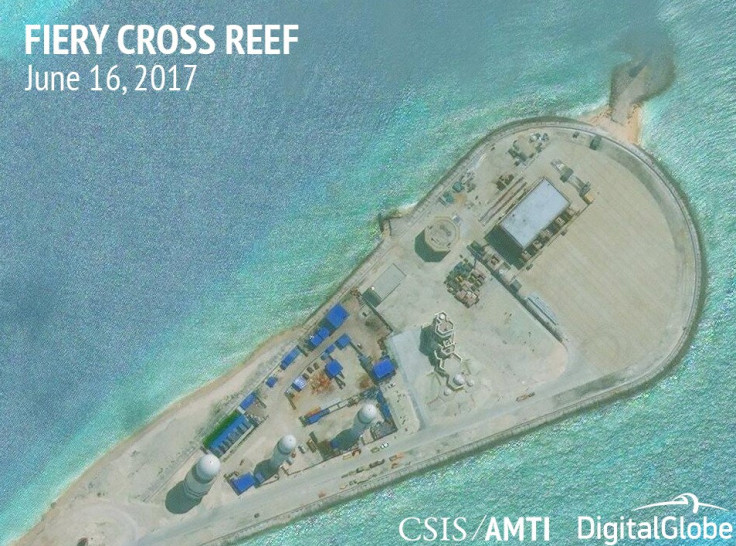Beijing scrambles warship, fighter jets after US Navy destroyer sailed in South China Sea
The US sailed an Arleigh Burke-class guided-missile destroyer near the contested Paracel Islands.

A guided-missile destroyer of the US Navy reportedly sailed near a disputed chain of islands in the South China Sea on Tuesday (10 October) angering Beijing.
Responding to Washington's actions, China's defence ministry scrambled a warship, two fighter jets and a helicopter to caution the US vessel. "We demand the US side earnestly take steps to correct its mistakes," said the ministry on Wednesday, 11 October.
Washington is said to have sent the USS Chafee, an Arleigh Burke-class destroyer, near the Paracel Islands.
The US routinely dispatches its naval vessels close to hotly contested regions in the South China Sea under the "freedom of navigation" operation in international waters. Still, the presence of other nations in the region infuriates Beijing as the communist government claims most reefs and islets in the South China Sea.
American officials have confirmed to multiple news outlets that the US sent the sophisticated warship but insisted it did not come within 12 nautical miles of any of the islands.
An official, who did not wish to be cited, told CNN that the latest mission was part of the US' longstanding effort in challenging Beijing's "excessive maritime claims" in the South China Sea.
Meanwhile, China's foreign ministry said it had formally lodged a complaint with the US through diplomatic channels. Its spokesperson, Hua Chunying, said in a regular press conference that Washington should respect China's territorial sovereignty in the region.
China has been controlling this particular Paracel chain of islands since 1974 but Beijing's assertions are challenged by Vietnam and Taiwan. While heavily militarising some of the islands in the region, China has strategically deployed other facilities such as oil rigs, including on Paracel Islands, to stamp its claims.
Though China claims sole custody of almost the entire energy-rich and strategically important South China Sea, several other nations such as Malaysia, Brunei, the Philippines, Taiwan and Vietnam lay overlapping claims.
© Copyright IBTimes 2025. All rights reserved.




















